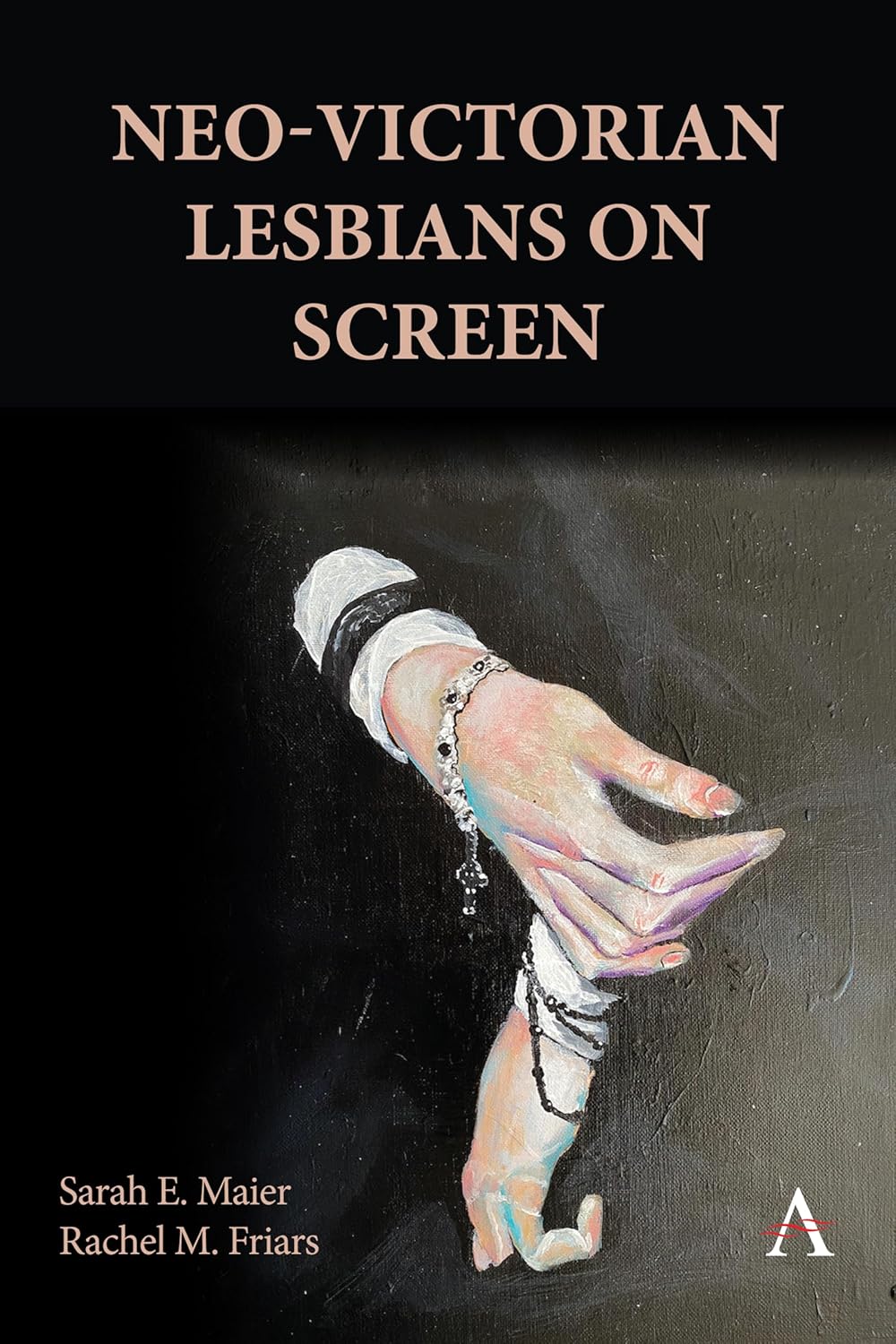Review of Neo-Victorian Lesbians on Screen by Sarah E. Maier and Rachel M. Friars

Neo-Victorian Lesbians on Screen
Sarah E. Maier and Rachel M. Friars
Anthem Press, 2025, 226 pages
$110.00
Reviewed by Atlanta Tsiaoukkas
Neo-Victorian Lesbians on Screen begins with a discussion of the 2021 SNL skit “Lesbian Period Drama.” This introduction documents the notorious rise across popular culture of visual media tropes depicting frail Victorian women engaged in tense romantic affairs. Accepting the display of satire as confirmation, Sarah E. Maier and Rachel M. Friars study neo-Victorian cinema and television in the past twenty-five years that center lesbianism, asking why filmmakers are drawn to the long nineteenth century when narrating queer female-centered stories.
Beginning with the early 2000s adaptations of Sarah Waters’ novels—Tipping the Velvet, Affinity, and Fingersmith—which triggered an enthusiasm for indulgent narratives of queer Victorian romance, Maier and Friars guide the reader through a broad range of material. Focusing on British and North American productions, with the notable exception of Céline Sciamma’s film Portrait of a Lady on Fire, it is undoubtable that this monograph represents the most complete assessment thus far of the lesbian period drama as a subgenre of historical cinema. Their forays into the American West with Godless (Frank) and The World to Come (Fastvold) were particularly insightful in their expansion of the geographic landscape of what is considered neo-Victorian cinema, examining how the conventionally masculine genre of the Western is queered by the inclusion of lesbian stories.
At times, Maier and Friars’ survey would have benefitted from a tighter focus, particularly in those chapters on biofictions like Lizzie (Macneil) and Ammonite (Lee), where the details of the cinematic narrative and historical accuracy meander far from the text’s central focus on lesbians on screen. Overall, Maier and Friars tell a contemporary nuanced story about declining spectacle in the depiction of neo-Victorian lesbian performances while emphasizing the emotional dimensions of these romantic relationships.
Despite frequently turning to the perspectives of directors in their analysis of neo-Victorian cinema, I was surprised to find that Maier and Friars spent little time considering the lack of lesbian professionals involved in the production of these films and television series. Across their selected corpus, only two leading actors publicly identify as queer: Kristen Stewart of Lizzie and Adéle Haenel of Portrait of a Lady on Fire. Similarly, only one director of the included films identifies as a lesbian, Sciamma, also of Portrait of a Lady on Fire. For a monograph that generously turns to the authority of the director on many occasions, this absence will be apparent to any lesbian reader wondering why period dramas rarely include lesbians in the creation of lesbian stories.
A similar limitation may be noted in the decision to use the term ‘lesbian’ over more inclusive terminology. Lesbian is not a term that is used frequently in neo-Victorian period dramas, since it is an identifier that only came to popular usage in the twentieth century. Its modern use in describing both real historical people and fictional portrayals of neo-Victorians on screen risks rendering some women characters’ sexualities less visible. Not all the women depicted in Maier’s and Friars’ corpus are shown as exclusively interested in relationships with other women—in The Confessions of Frannie Langton (Harkin), for example, Marguerite also has relationships with men. Whilst the last quarter century of neo-Victorian representation has affirmed that lesbians did exist in the past, the existing scholarship has not made sufficient room for the possibility of bi- and pansexualities, which continue to be historical and cinematic impossibilities.
Maier and Friars’ Neo-Victorian Lesbians on Screen offers a valuable retrospective of the rich neo-Victorian lesbian narratives in the first decades of the twenty-first century that I hope will ignite enthusiasm for further investigations. Their multifaceted analysis, encompassing feminist, queer, and decolonial insights, is a significant contribution to the field.
Atlanta Tsiaoukkas is a UK-based writer and researcher currently working towards a PhD on queer Victorian schoolgirls and their homoerotic friendships. Find her on Instagram @aatlanta_aa and Substack girlishh.substack.com.
"Empowerment comes from ideas."
― Charlene Carruthers
"Your silence will not protect you."
— Tourmaline
"Gender is the poetry each of us makes out of the language we are taught."
— Leila Raven


